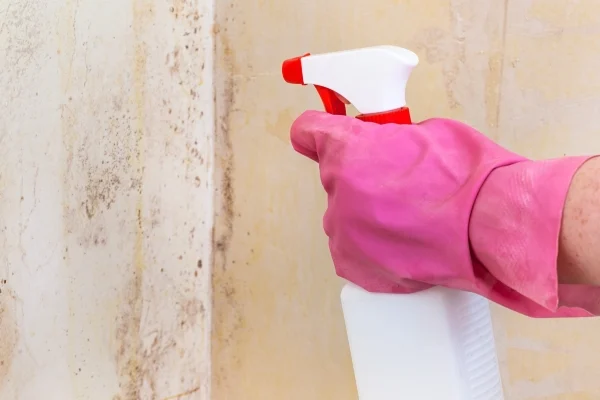Updated December 12, 2022  Are you fed up with the persistent presence of mildew in your home? If so, you're in the right place. This comprehensive guide is designed to help you eliminate and prevent mildew from taking over your living space. You'll find practical tips, expert advice, and actionable steps to keep your home clean and healthy. Mildew is a type of fungus that thrives in damp and humid conditions. It can lead to unpleasant odors, unsightly stains, and even damage to your walls, fabrics, and other surfaces. Fortunately, there are effective ways to deal with it—both for removal and prevention. In this article, you’ll learn how to recognize signs of mildew, how to remove it properly, and most importantly, how to stop it from coming back. Whether you’re dealing with a small patch or a larger infestation, this guide has you covered. One of the first signs of mildew is a musty, damp smell. If you detect an unpleasant odor in your home, especially in areas like bathrooms or basements, it could be a sign of mildew. You may also notice discolored patches on walls, ceilings, or fabrics. Mildew often appears in moist corners, near windows, or under sinks. It can also grow on the underside of roof tiles or gutters if there’s water leakage. If you spot these signs, it's important to act quickly before the problem worsens. If left untreated, mildew can spread rapidly, making it harder to remove. For example, if you see mildew on your roof tiles, check for leaks or water damage first before attempting any cleaning. Mildew thrives in environments with high humidity and poor ventilation. Bathrooms, kitchens, and laundry rooms are particularly vulnerable because they tend to have more moisture in the air. Humidity levels in your home play a big role in whether mildew will grow. When the air holds too much moisture, it creates the perfect environment for mildew to flourish. Activities like cooking, boiling water, or using a humidifier can increase indoor humidity, contributing to the problem. While it's impossible to completely eliminate mold spores from the air, you can take steps to reduce their growth. Here are some effective strategies to keep mildew at bay: Stagnant air encourages mildew growth, so it's important to keep your home well-ventilated. Use fans, open windows, or install exhaust fans in damp areas like bathrooms or kitchens to improve airflow. Mildew loves moisture, so keeping your home as dry as possible is key. Wipe up spills immediately, fix leaks, and avoid leaving wet towels or clothes lying around. Using hot water when washing clothes can also help reduce humidity in the room. Wiping down surfaces with a diluted bleach solution, vinegar, or hydrogen peroxide can kill mildew spores and prevent them from growing. Tea tree oil is another natural option that can help control mildew. During warmer months, air conditioning can help lower indoor temperatures and reduce humidity, which makes it less favorable for mildew to grow. Dehumidifiers are great tools for controlling moisture levels, especially in basements or crawlspaces. They remove excess moisture from the air, reducing the risk of mildew growth. The best approach is to prevent mildew from forming in the first place, but if it’s already present, quick action is needed. Start by identifying and fixing the source of moisture, such as a leak or condensation issue. Once the source is addressed, clean the affected areas thoroughly using a mild bleach solution. Make sure to dry out the space as quickly as possible to prevent regrowth. Opening windows and using fans can speed up the drying process. To protect your home long-term, maintain proper humidity levels by increasing ventilation, using dehumidifiers, and avoiding activities that raise indoor moisture. Seal cracks or gaps in walls and roofs to prevent moisture from entering. Using environmentally friendly cleaning products and hiring professional services for severe cases can also help. In extreme situations, replacing moldy materials with mildew-resistant alternatives like vinyl flooring or paint is a good option. Ventilation is essential for preventing mildew. Natural ventilation through open windows, mechanical systems like air conditioners, or indoor air quality products can all help bring fresh air into your home and reduce humidity. Mildew is a common problem in homes, especially in damp and poorly ventilated areas. By maintaining low humidity, improving air circulation, and cleaning regularly, you can effectively prevent and remove mildew. Once you’ve cleaned your home, make sure to take steps to stop it from returning. Sealing cracks, using dehumidifiers, and choosing mildew-resistant materials are all smart choices for long-term protection. cnc boring heads,boring head for cnc mill,cylinder boring head,adjustable boring heads,adjustable boring head for mill SICHUAN JOJO TOOLS CO., LTD , https://www.jojo-tools.com
How to Identify Mildew
What Causes Mildew?
Tips for Preventing Mildew
Keep the Air Moving
Ensure Surfaces Are Dry
Clean Regularly
Use Air Conditioning
Use a Dehumidifier
How to Remove Mildew
Protect Your Home from Mildew
The Importance of Ventilation
Summary and Conclusion
 hbspt.cta._relativeUrls=true;hbspt.cta.load(7667689, '68632c8b-76e2-4d28-89fe-a2b1fcda8aa4', {"useNewLoader":"true","region":"na1"});
hbspt.cta._relativeUrls=true;hbspt.cta.load(7667689, '68632c8b-76e2-4d28-89fe-a2b1fcda8aa4', {"useNewLoader":"true","region":"na1"});
Non-standard Boring Head